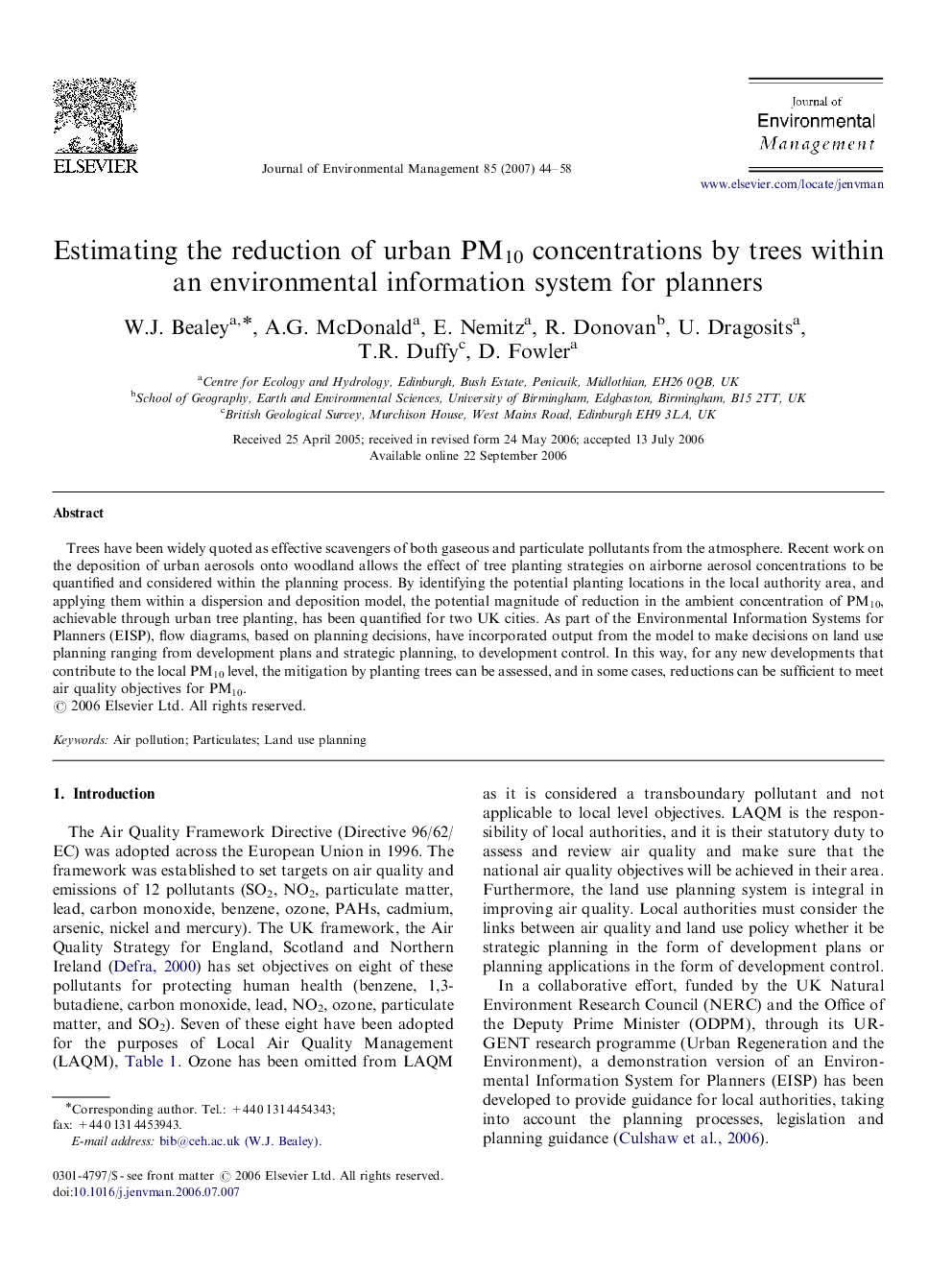| Article ID | Journal | Published Year | Pages | File Type |
|---|---|---|---|---|
| 1058578 | Journal of Environmental Management | 2007 | 15 Pages |
Trees have been widely quoted as effective scavengers of both gaseous and particulate pollutants from the atmosphere. Recent work on the deposition of urban aerosols onto woodland allows the effect of tree planting strategies on airborne aerosol concentrations to be quantified and considered within the planning process. By identifying the potential planting locations in the local authority area, and applying them within a dispersion and deposition model, the potential magnitude of reduction in the ambient concentration of PM10, achievable through urban tree planting, has been quantified for two UK cities. As part of the Environmental Information Systems for Planners (EISP), flow diagrams, based on planning decisions, have incorporated output from the model to make decisions on land use planning ranging from development plans and strategic planning, to development control. In this way, for any new developments that contribute to the local PM10 level, the mitigation by planting trees can be assessed, and in some cases, reductions can be sufficient to meet air quality objectives for PM10.
